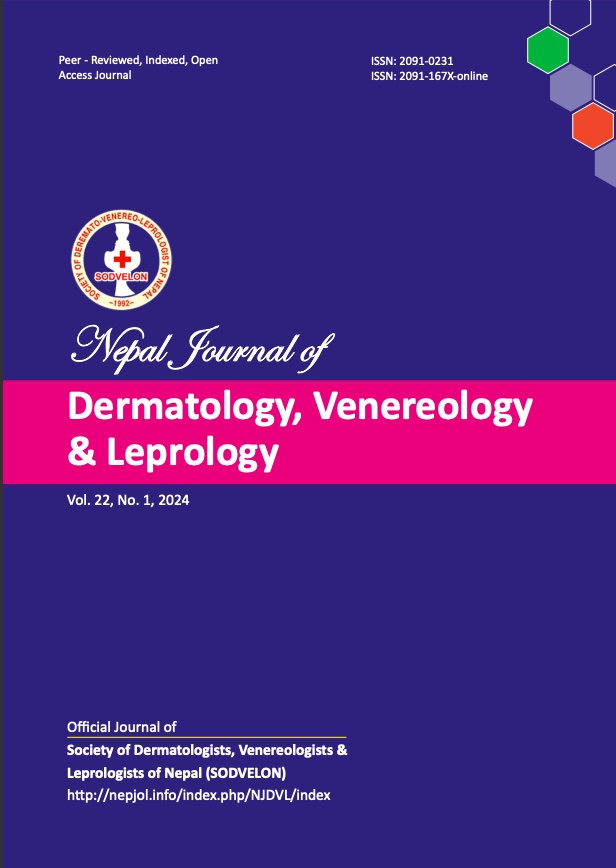Impact on Quality of Life in Chronic Pruritus in a Tertiary Level Hospital in Kathmandu
DOI:
https://doi.org/10.3126/njdvl.v22i1.62948Keywords:
Itch, Pruritus, Quality of lifeAbstract
Introduction: Chronic pruritus is a common complaint in various dermatologic as well as non-cutaneous conditions, and it leads to significant impairment in the quality of life of the individuals suffering from it. The 5-D Itch Scale is an internationally validated multidimensional tool for the assessment of the burden of itching, localization patterns, pruritus intensity and evolution, as well as impaired sleep, difficulty in performing daily household activities, and social obligations and responsibilities in school and work.
Objective: To assess the impact on various aspects of quality of life in chronic pruritus in a tertiary level hospital in Kathmandu.
Materials and Methods: This was a hospital-based descriptive cross-sectional study conducted in the Department of Dermatology and Venereology, Tribhuvan University Teaching Hospital, Kathmandu, over a period of one year (October 2020 through September 2021), involving 180 participants. The impact on quality of life was measured with the 5-D Itch Scale.
Results: The mean total 5-D score was 17.06 ± 2.697 (range 8 to 25), showing a severe impact on the quality of life of participants. Pruritus was unbearable in 22.2% and of severe intensity in 47.8% of participants. The impairments in sleep were found to be the most disabling by 40.5% of participants, while the majority of participants (93.9%) had developed some form of disability in leisure or social activities due to chronic pruritus.
Conclusion: Individuals suffering from chronic pruritus face severe deterioration in various aspects of quality of life.
Downloads
Downloads
Published
How to Cite
Issue
Section
License
Copyright (c) 2024 Society of Dermatologists, Venereologists and Leprologists of Nepal

This work is licensed under a Creative Commons Attribution 4.0 International License.
Copyright on any research article is transferred in full to Nepal Journal of Dermatology, Venereology & Leprology upon publication. The copyright transfer includes the right to reproduce and distribute the article in any form of reproduction (printing, electronic media or any other form).




